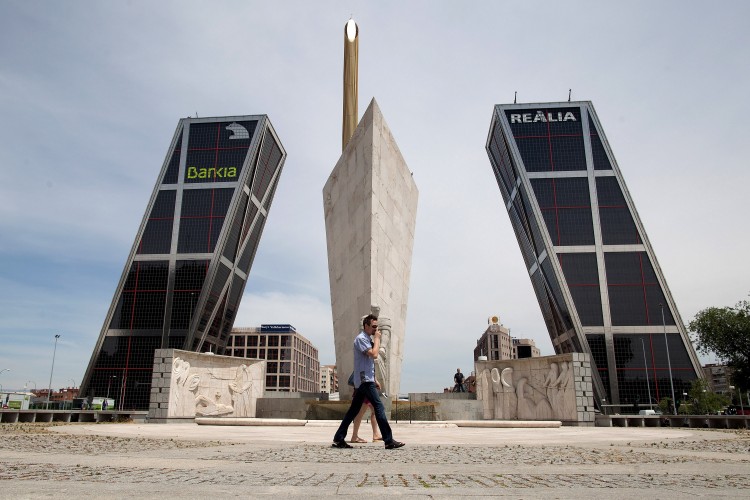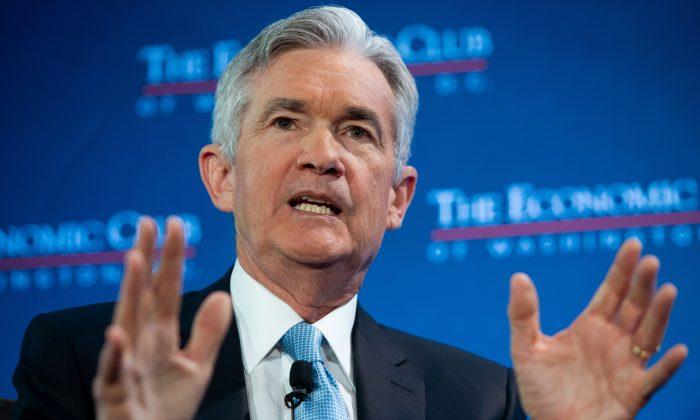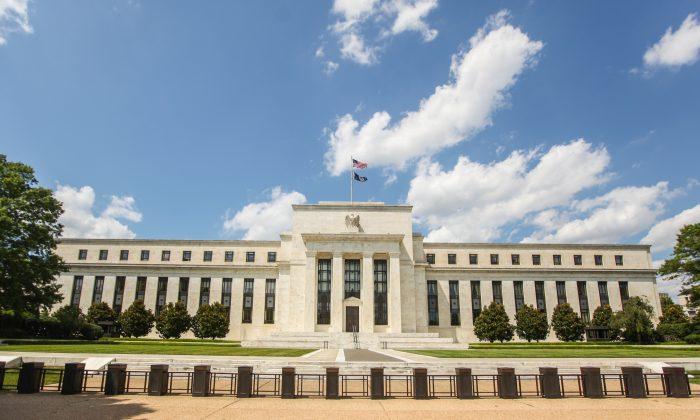AMSTERDAM—Last week was volatile, frantic, and nerve-racking for traders and investors alike. So called “tape-bombs”—a term used by traders to describe market moving news items— hit right and left.
Markets rallied briefly in the hope of additional stimulus by the European Central Bank (ECB), but the chairman kept rates on hold and did not announce any unusual policy measures. Ben Bernanke echoed Mario Draghi in his testimony before Congress. The message to markets was clear—no immediate stimulus from central banks but an expectation by the central banks that governments put their houses in order and in this will help put the global economy back on track.
The G-7 meeting of the seven largest economies in the world came and went without any definitive conclusions and measures to help the eurozone. Economic data wasn’t inspiring either with German industrial production declining 2.2 percent in April where only a 1 percent contraction was expected. GDP for the eurozone was flat in the first quarter thus just barely avoiding the technical qualification for a recession of two quarters with negative GDP growth.
The main theme for the whole week was Spain, however, where tough negotiations and a seemingly endless back-and-forth with Germany ultimately resulted in Spain receiving 100 billion euros ($125.17 billion) to recapitalize its ailing banking sector. Spanish banks have been pushed to the brink by deposit flight and the recent nationalization of savings-and-loans giant Bankia, which like many other institutions suffers under a mountain of bad real estate loans.
The EURO STOXX Index ultimately gained 3.6 percent to close at 2,143 points. In a reversal of trends seen the week before last, eurobanks and Spain recovered and so did the euro. The Euro banking index closed up 9.4 percent and Spain recovered 8 percent in what seems to be a nearly perfect correlated market. The euro gained 0.65 percent to close at $1.25 for the week.
How Spain Got the Bailout
The official statement from the eurogroup body of finance ministers from the 17 euro nations masks the intense negotiations that happened before the bailout was secured late last Saturday.
“The eurogroup supports the efforts of the Spanish authorities to resolutely address the restructuring of its financial sector and it welcomes their intention to seek financial assistance from euro area member states to this effect.”
The key questions at the heart of negotiations between Spain and Germany were always where the money would come from and what it would be its use. The last agreement shows that Spain will receive the bailout in the form of a loan from the European Financial Stability Fund (EFSF) to its own Fund for Orderly Bank Restructuring (FOBR). This fund guaranteed by the Spanish sovereign will use the money to recapitalize the largest 14 banks, which hold around 90 percent of the country’s banking assets.
This, however, is also the crux, as the statutes of the EFSF dictate that the money cannot be used to bailout banks directly. Germany was always a staunch adherent of these principles and this was definitely one of the most hotly debated points. The reason Germany is in favor of direct EFSF loans to the sovereign is that these loans come with conditions of austerity and other measures stipulated by the European Union and offer some kind of control over the country that receives the package.
In Spain’s case this does not hold true, at least not officially. Spain’s Finance Minister Luis de Guindos declared that the bailout money would not constitute a package with conditions attached, as was the case with Greece, Ireland, and Portugal but that the money would flow to the FOBR and be guaranteed by Spain.
German Finance Minister Wolfgang Schäuble, however, stated in an interview with German TV Station ARD that Spain would have to launch a program to restructure the banks together with the European Commission and the ECB as well as the International Monetary Fund (IMF). These three institutions, the so-called “Troika” are also the parties that manage the bailout packages of the other three countries.
It is highly likely that this agreement was constructed in a way that would allow Spain to save face and not risk more civil unrest in the wake of drastic cuts in government spending already being implemented. On the other hand, Germany can also claim to have won the negotiations if said institutions really will participate in the drafting of a restructuring paper for Spanish banks, once the dust has settled.
Long-Term Success Doubtful
There are several issues with this deal that could still result in it being scrapped or at least delayed.
First, the EFSF is still dependent on secondary market funding and is only guaranteed by the eurozone governments—one of which is Spain—none of which actually transferred any capital. Spain will likely be removed from the list of guarantors thereby weakening the credit rating of the EFSF and its ability to raise funds in the open market.
This could be remedied by the introduction of the European Stability Mechanism (ESM), which will be fully funded, but this deal could at least delay its introduction. Germany still needs to ratify the treaty of the ESM in its Parliament and what was assumed to be a given is now put into question. Both the EFSF and the ESM were not supposed to lend to banks directly according to the rules put forward by Germany and other AAA-rated nations. Despite the fact that this rule has not been violated in letter, it has been violated in spirit and puts a question mark behind Germany’s swift approval of the new rescue fund.
Second, the 100 billion euro loan to the Spanish FOBR is guaranteed by the Spanish government and therefore unofficially is part of its debt-to-GDP ratios. It will not show up in the numbers until Spain actually has to make good on the guarantees, but smart investors will see through this. The loan that represents roughly 10 percent of Spanish GDP will therefore further weaken its credit with institutional investors and the country might have a more difficult time raising capital in the future.
JP Morgan estimates that the cost of a bank recapitalization in Spain could be as high as 150 billion euros ($187.75 billion). “[JP Morgan] banking analysts have suggested recapitalization needs may ultimately run to 150 billion euros if Irish experience is a template for the losses that may ultimately accrue on the mortgage book,” says the bank in a note to clients.
The Epoch Times publishes in 35 countries and in 19 languages. Subscribe to our e-newsletter.


